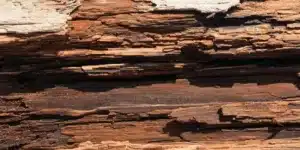Book your survey today!

Wet Rot Inspection
If you are experiencing problems with Wet Rot or are unsure whether you have it, the best first step is to get in touch with our team, and we will come out and inspect the problem.
Our experts have many years of experience successfully dealing with the challenges of Wet Rot and eradicating it from properties.
We will survey the affected area and provide you with a detailed plan on how we can remedy the situation.
Remove The Source
The first step to solving any Wet Rot issues is to cut it off at the source. More often than not, the problem results from rising damp, penetrating damp or a build-up of condensation.
We tend to find other reasons, including leaking appliances, broken pipes and other damaged fixtures and fittings.
This damp is enabling the wet rot spores and fungus to germinate.
While cutting the moisture off at the source, we will also allow the area to dry out thoroughly. Any lingering dampness could result in a return of the condition.
Our team have many years of experience identifying and solving the potential causes of leaks and dampness. They will provide ongoing hints and tips on reducing any potential issues you might face in terms of dampness.


Repair and replace
Once the problem area is identified, given the nature of the fungus and how it attacks the timber, the affected area will need to be replaced. We will only replace what is required. The wood used as a replacement will be treated with an appropriate resin to help prevent further issues and avoid a return of Wet Rot.
We will also replace any decorative timbers that might have been affected.
Fungicidal treatment
Following the thorough drying process, the remaining timbers will all be treated with fungicidal treatment products that will prevent the return of the Wet Rot fungus spores.
As mentioned, any timber being replaced will be pre-treated to ensure continuity.
Treating Wet Rot Yourself
If you are faced with an isolated incident of Wet Rot, the source is obvious, and the area is restricted, it is a case that you could solve the problem yourself.
Start by cutting off the moisture at the source. Then, if it's not made its way into the structural aspects of the building, you could strip back the timber and treat it with a fungicide and wood preservative to strengthen it going forward.
However, if you need to replace the elements of timber in the house, then it is probably time to call in the professionals.


What Is The Cost Of Wet Rot Treatment?
The challenge of outlining a set price for Wet Rot treatment is that every job is different. We always offer a bespoke service to our customers based on the Wet Rot problems they face.
We have outlined in this blog the general costs of some jobs to give you some idea of the potential cost of a job. However, we always start with a survey to ensure we offer you a full appraisal of your situation. From here, we outline the set of steps required to eradicate the problem.
Take a look at our survey options and get in touch with our team, who can guide you in the right direction.
Contact your local Wet Rot Specialist
If you think you have a problem with Wet Rot and would like some advice or would like one of our specialists to attend to provide you with a survey then just get in touch with our office on 01732 884 535.
Alternatively, just follow the link below and fill out our online Wet Rot Survey request and we will be in touch as soon as possible.

Wet and Dry Rot Case Studies
Wet and Dry Rot FAQs
Dry rot, also known as Serpula lacrymans, refers to a fungus that occurs when there is a low level of moisture in the air combined with poor ventilation.
Despite its name, Dry rot affects damp/moist timber. Dry rot is a destructive form of fungi.
There are 4 stages of dry rot growth – Spores, Hyphae, Mycelium, Fruiting body. Wood can shrink and darken in colour, there can be a damp type of smell and as with wet rot grey threads similar to cobwebs can be present. Mycelium is the penultimate stage of growth and will appear as ‘cotton wool’ type balls. The final stage is the fruiting body which has a mushroom type of appearance and often has an orange surface with large pores.
If you need an expert opinion, then get in touch. For a correct diagnosis get in touch. Read here more info on when it has been misdiagnosed
It is unlikely that wet rot will spread although dry rot can spread to other areas very quickly given the right conditions.
As with Wet Rot, the cause of the damp will need to be identified and treated and the area dried out.
Affected areas may need to be treated with a masonry biocide.Rotten timbers will need to be replaced where they have been weakened.
Finally, ventilation will need to be improved to prevent the reoccurrence of another infection. The most important part of the treatment is correctly identifying the source and rectifying the defect.

Need help? Book a survey at a time to suit your schedule
Our mission is to give you the peace of mind you deserve when it comes to waterproofing your house or business. Commission a survey from our team to assess your situation professionally.



